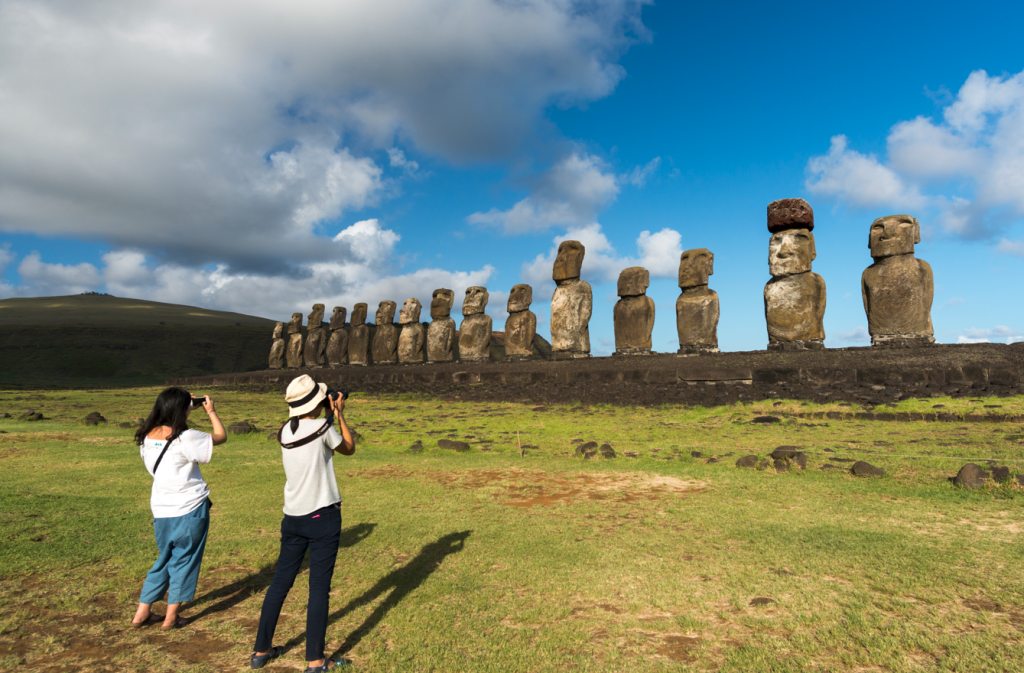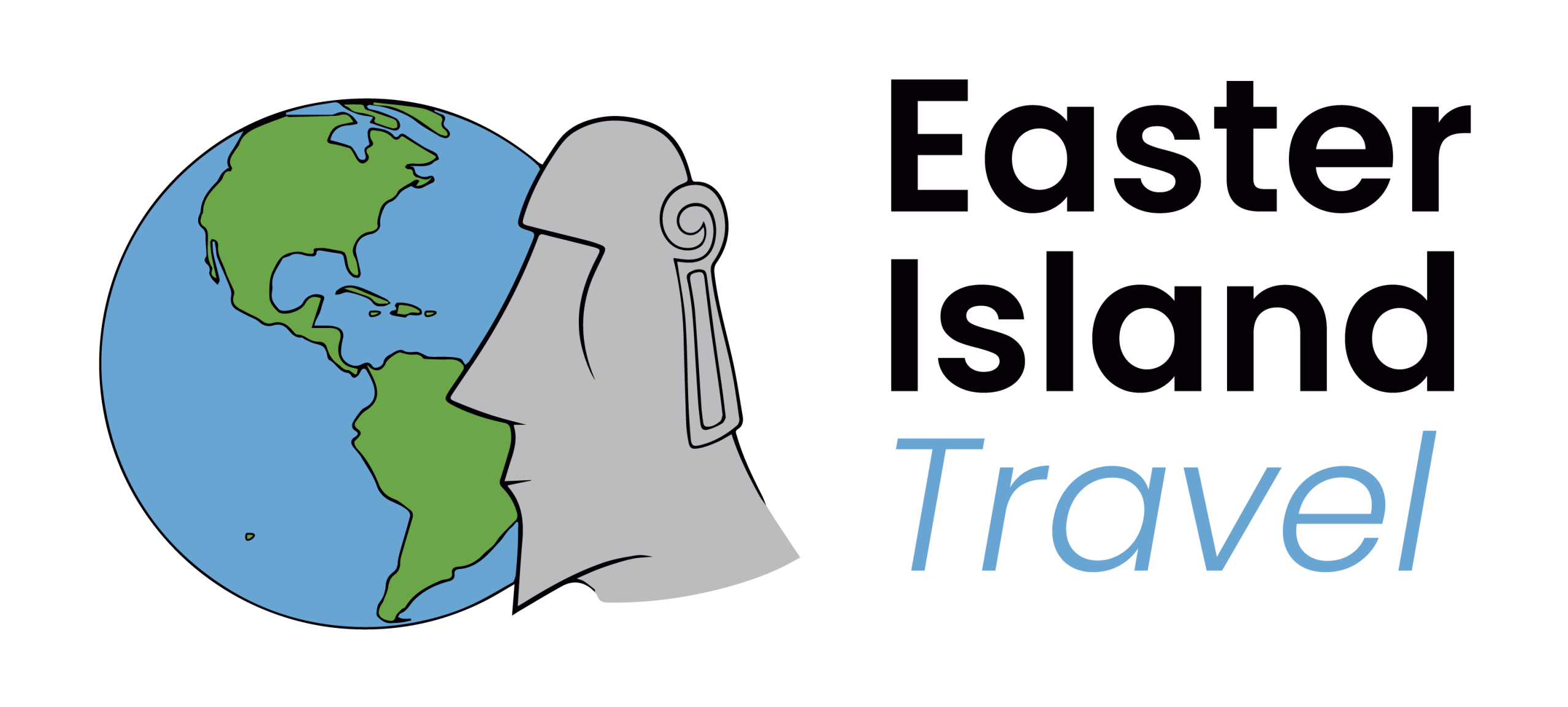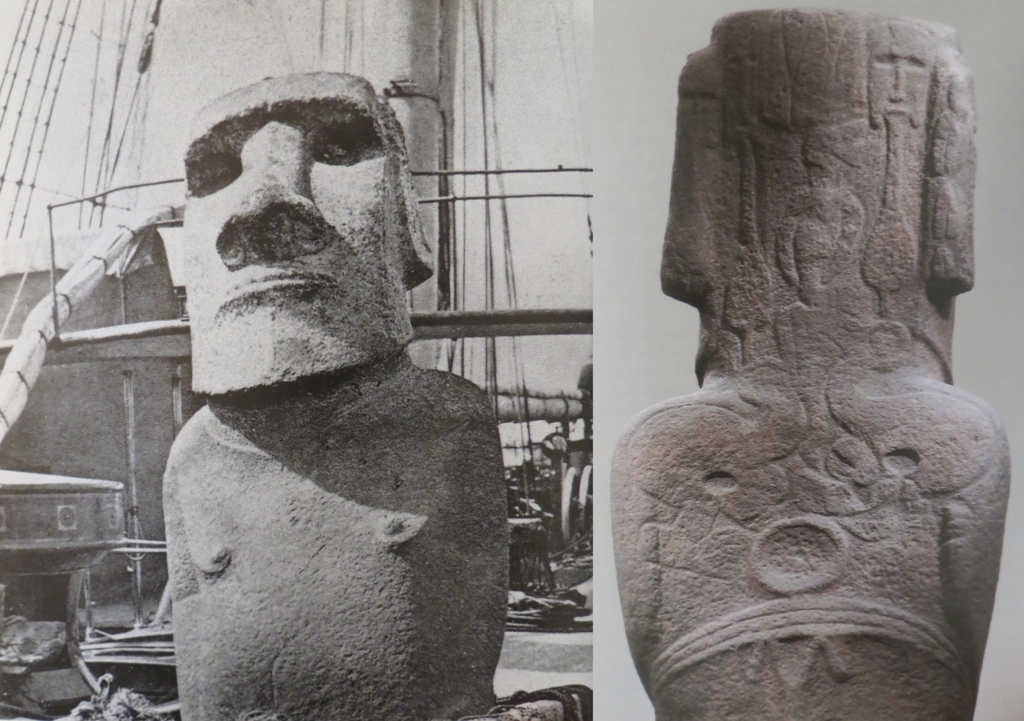Among the hundreds of moai found across Rapa Nui, one in particular stands out—not because of where it is, but because of where it isn’t. The moai Hoa Hakananai‘a is not on the island, yet its story remains a key part of our tours at Easter Island Travel. This statue is unique in its origin, symbolism, and the path it has taken far beyond Rapa Nui’s shores.
In this article, we want to share with you—clearly and from a local perspective—what we know about this moai, as guides who speak about it often during our tours, especially when we visit the ceremonial village of Orongo, where it stood until it was removed more than 150 years ago.
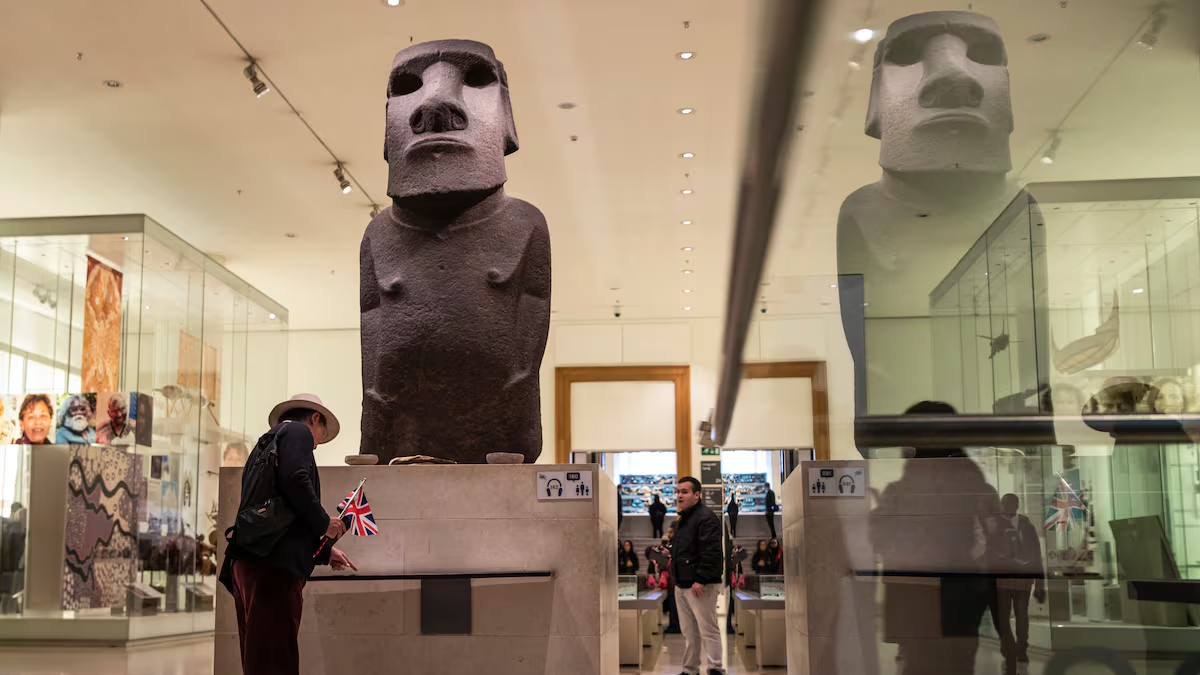
Who is the moai Hoa Hakananai‘a?
Hoa Hakananai‘a is one of the most iconic figures in Rapa Nui’s artistic and spiritual heritage. Its name can be translated as “the hidden friend” or simply “the hidden one,” and it is one of the few moai carved from basalt—a much harder volcanic rock than the softer tuff used for most of the others.
Today, Hoa Hakananai‘a is not in Rapa Nui. It has been on display at the British Museum in London since the late 19th century. Its presence there remains the subject of ongoing debate and formal requests for its return by the Rapa Nui community.
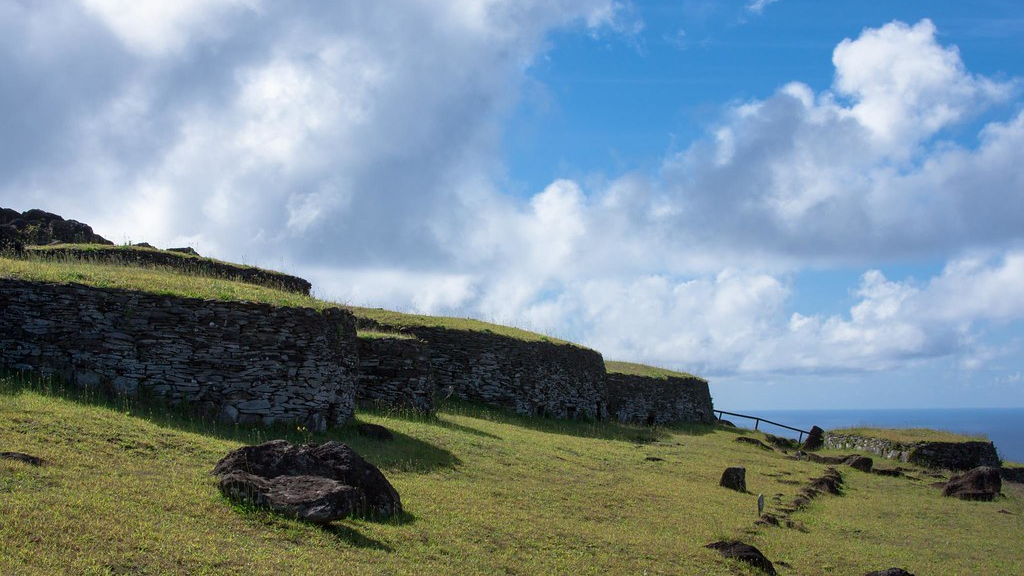
Original location: the ceremonial village of Orongo
Originally, the statue stood at Orongo, a ceremonial village perched on the rim of the Rano Kau volcano. This site, which we frequently visit in our tours, played a central role in the Birdman Cult (Tangata Manu), a belief system that emerged after the decline of moai construction.
Its location within this sacred space makes Hoa Hakananai‘a a symbol of transition—from the ancestral worship represented by the moai to a new spiritual era centered on Makemake, the creator god, and the Birdman ritual.
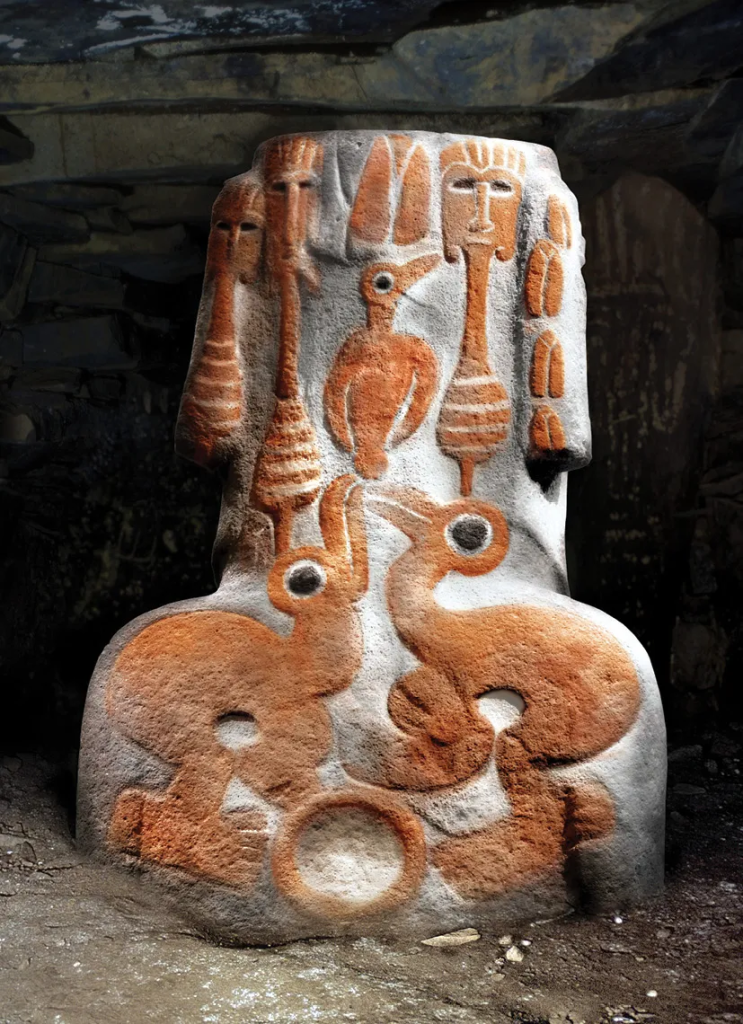
A moai unlike any other
What makes Hoa Hakananai‘a truly exceptional is the presence of carvings on its back—something extremely rare among moai. These carvings include:
- Birdmen with human bodies and bird heads
- Symbols of Makemake, the central deity of the Birdman Cult
- Ceremonial paddles (ao and rapa), emblems of authority
- Geometric motifs linked to mana, the spiritual energy of the ancestors
Because of these features, Hoa Hakananai‘a is considered a one-of-a-kind masterpiece that brings together two key spiritual traditions in Rapa Nui’s history. It is also one of the best-preserved moai in existence.
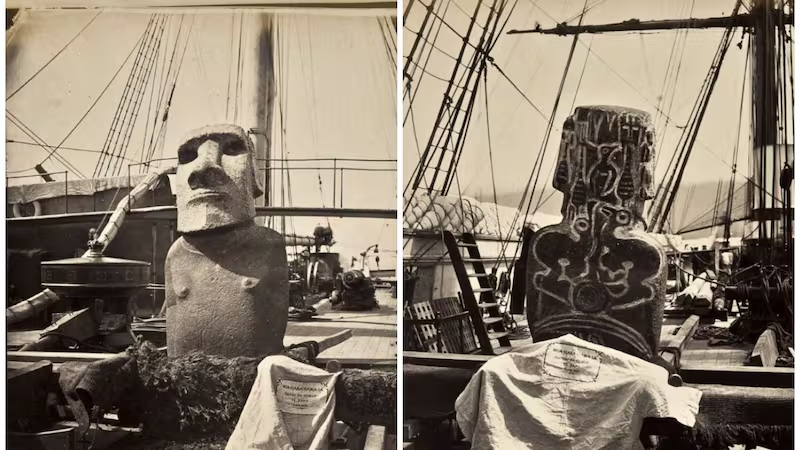
How did it end up in the British Museum?
In 1868, the moai was removed by the crew of the British ship HMS Topaze during a naval expedition. It was taken to England and presented to Queen Victoria, who later transferred it to the British Museum, where it remains to this day.
At the time, there were no clear laws governing the protection of cultural heritage. However, the Rapa Nui community never gave formal permission for its removal. In recent decades, this has led to official repatriation requests, citing the statue’s deep spiritual and cultural significance for the island’s people.
From our perspective as local guides, many travelers are surprised to learn that one of Rapa Nui’s most important moai is not on the island, but can only be seen in London.
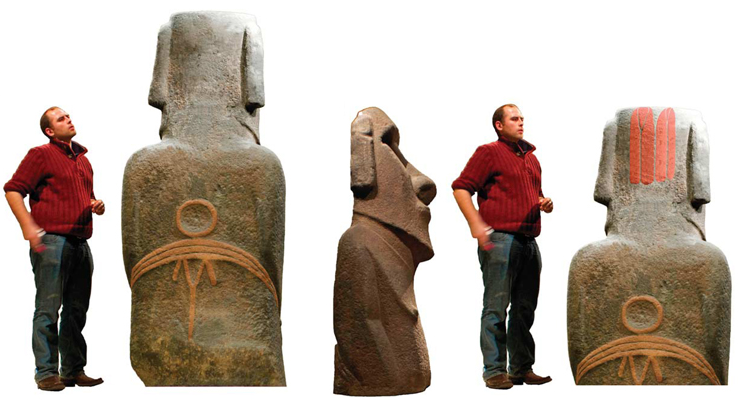
Physical features
- Height: approximately 2.4 meters
- Weight: between 4 and 5 tons
- Material: dark gray basalt (one of the island’s hardest stones)
- Condition: very well preserved, with clearly visible rear engravings
These traits set it apart from the moai you see at sites like Ahu Tongariki or Rano Raraku, where most statues are carved from softer volcanic tuff.
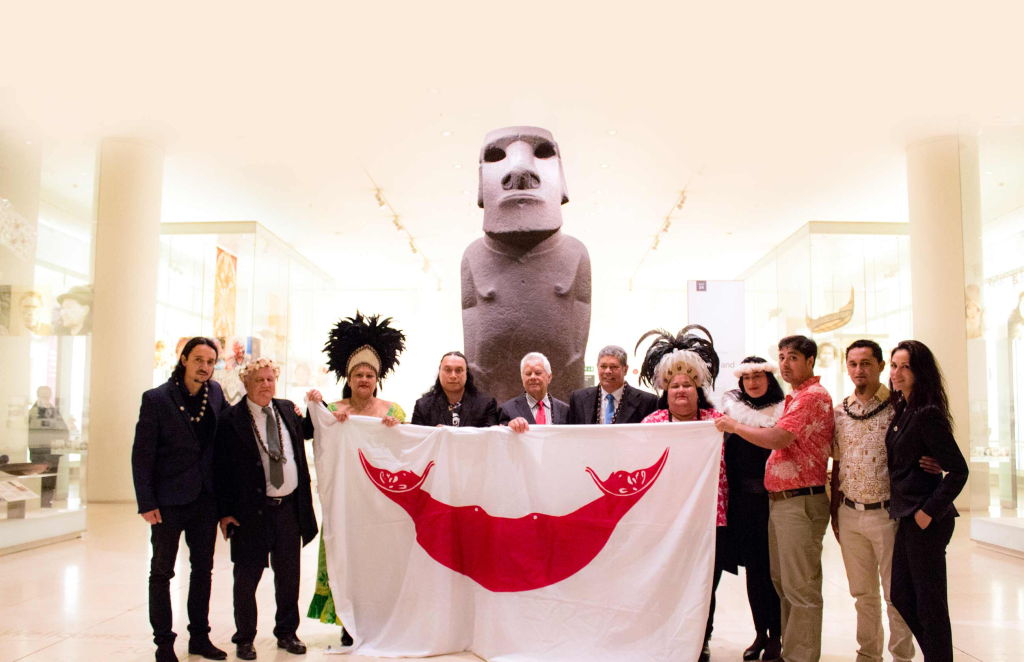
Should it return to the island?
This is a question we often hear from visitors on our tours. Most people agree that Hoa Hakananai‘a should return to Rapa Nui out of respect for its origins and cultural meaning.
Over the years, Rapa Nui leaders have submitted formal requests for its return. They’ve even proposed solutions for proper conservation and exhibition in a local museum in Hanga Roa—so that islanders and visitors alike can experience it in its cultural context.
So far, the British Museum has acknowledged the moai’s cultural importance but has not agreed to return it. This debate echoes similar global conversations around artifacts taken during colonial times or 19th-century expeditions.
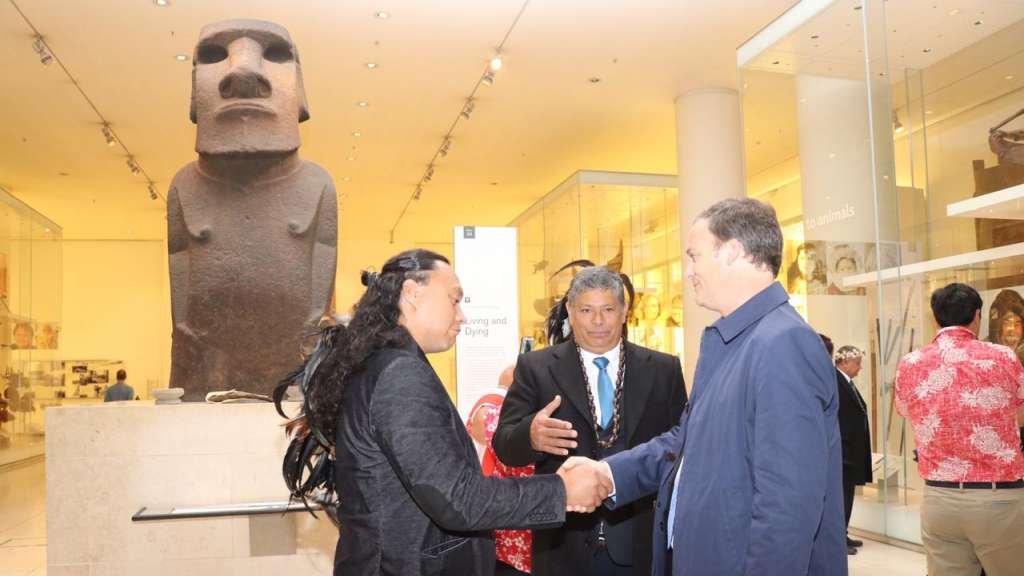
How we talk about Hoa Hakananai‘a in our tours
At Easter Island Travel, we speak about this moai every time we visit Orongo. We share its story, its symbols, and the details of its removal. We also show images and recreations to help travelers understand its importance.
We believe that understanding this story deepens the appreciation for moai as more than sculptures—they are spiritual beings, ancestral presences with a deep connection to the land and people of Rapa Nui.
Hoa Hakananai‘a is far more than just a statue in a foreign museum. It is a key piece of Rapa Nui’s story—historically, spiritually, and artistically. Its absence from the island remains a deeply felt and unresolved issue.
At Easter Island Travel, we will continue to share this moai’s story with respect, local insight, and the hope that one day it may return to the land it was carved for. Until then, we honor it each time we visit Orongo, the place where it once stood, gazing out toward the sea.
